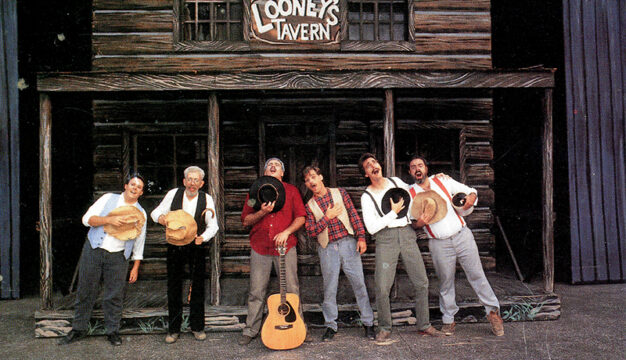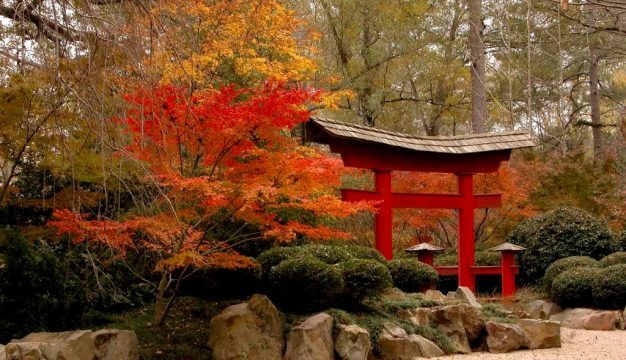Camp ASCCA
 Camp ASCCA Sign
Alabama's Special Camp for Children and Adults (Camp ASCCA) is the world's largest handicap-accessible, or barrier-free, recreation camp, offering year-round therapeutic and recreational programs for children and adults with physical and intellectual disabilities. Camp ASCCA is located on 230 wooded acres along Lake Martin in Jackson's Gap, Tallapoosa County. The camp offers a variety of indoor and outdoor programs and activities for children age six and older as well as adults of all ages. Currently, the camp is run by the nonprofit national charitable organization Easterseals, a national charitable organization devoted to providing services and life enhancement opportunities to the physically and intellectually disabled.
Camp ASCCA Sign
Alabama's Special Camp for Children and Adults (Camp ASCCA) is the world's largest handicap-accessible, or barrier-free, recreation camp, offering year-round therapeutic and recreational programs for children and adults with physical and intellectual disabilities. Camp ASCCA is located on 230 wooded acres along Lake Martin in Jackson's Gap, Tallapoosa County. The camp offers a variety of indoor and outdoor programs and activities for children age six and older as well as adults of all ages. Currently, the camp is run by the nonprofit national charitable organization Easterseals, a national charitable organization devoted to providing services and life enhancement opportunities to the physically and intellectually disabled.
Camp ASCCA was founded in 1976 by Easterseals of Alabama, a subsidiary of the larger national Easterseals organization. Easterseals of Alabama provides vocational services, medical services, children and family services, educational services, community accessibility and transportation services, as well as camping and recreational opportunities for individuals with physical and intellectual disabilities. In addition to Camp ASCCA, the organization currently sponsors eight other community rehabilitation programs in Alabama.
The camp relies on trained seasonal staff and volunteers, often from colleges and universities in the state, to run the organization, with one staffer for every two campers. Its educational philosophy focuses on placing regular education students into special education classrooms and including mainstream persons with disabled persons. Camp ASCCA typically hosts more than 7,000 individuals annually, mostly during week-long summer sessions. The camp charges a fee for attendance.
 Camp ASCCA Horseback Riding
Campers are offered a wide variety of barrier-free recreational and educational activities. Water-based activities include fishing, tubing, water skiing, canoeing and boating on the lake, a "splash pad," an accessible waterslide, and swimming. Other activities include horseback riding, arts and crafts, miniature golf, and outdoor adventure activities, such as a zip-line, cargo net and climbing frame, bocce ball, and riflery, and team sports such as basketball, volleyball, and softball. Campers experience nature appreciation, geocaching, and more. Evening programs include campfires, dances, and talent shows. The goals of these programs and activities include teaching campers new skills, helping them build new friendships, and allowing them to participate in a wide variety of activities.
Camp ASCCA Horseback Riding
Campers are offered a wide variety of barrier-free recreational and educational activities. Water-based activities include fishing, tubing, water skiing, canoeing and boating on the lake, a "splash pad," an accessible waterslide, and swimming. Other activities include horseback riding, arts and crafts, miniature golf, and outdoor adventure activities, such as a zip-line, cargo net and climbing frame, bocce ball, and riflery, and team sports such as basketball, volleyball, and softball. Campers experience nature appreciation, geocaching, and more. Evening programs include campfires, dances, and talent shows. The goals of these programs and activities include teaching campers new skills, helping them build new friendships, and allowing them to participate in a wide variety of activities.
Facilities at Camp ASCAA, many of which may be rented by organizations outside of the camp, reflect the main sponsors of the camp. Overnight accommodations consist of a 48-bed conference center and residential lodge; a 32-bed semi-private lodge; an 8,000-square-foot dining hall; a 44-bed dorm-style lodge; and dorm-style boys and girls cabins that each sleep 72 individuals. Other facilities consist of an amphitheater, a chapel, and a pavilion that includes a basketball and volleyball court and game room, a pool, an arts and crafts building, tennis courts, a softball field, and a high and low ropes course.
 Camp ASCCA Multisensory Room
Opened in 2004, the Oscar C. Dunn Rotary Environmental Center is a 7,800-square-foot learning facility that provides the locus of Camp ASCCA's Environmental Education Programs Camp, housing day, overnight, and week-long hands-on environmental science camps for school groups of all ability levels. The building itself is divided into three large areas consisting of an exhibit room, an audio-visual room, and a classroom. The exhibit room features hand-painted murals, ecosystem displays, and interactive displays that are integrated into the overall themes of land, water, and sky. Through these exhibits, visitors learn information applicable to each theme, such as Life Below the Surface—Dens and Burrows, where students explore a life-sized tunnel with displays of creatures that live underground. The Tiny World of Invertebrates explores how invertebrates are reliable indicators of water quality, and the Extreme Weather exhibit emphasizes sky displays and a live feed weather station. The adjacent audio-visual room showcases educational materials and includes a general meeting area for school groups and special lectures. The classroom also provides additional space for teaching programs related to the exhibits and Camp ASCCA's outdoor programs. Along the exterior of the Dunn Center is a 1,500-foot boardwalk that stretches through the woods and along the shoreline of the lake, with plaques identifying trees indigenous to the area along the trail.
Camp ASCCA Multisensory Room
Opened in 2004, the Oscar C. Dunn Rotary Environmental Center is a 7,800-square-foot learning facility that provides the locus of Camp ASCCA's Environmental Education Programs Camp, housing day, overnight, and week-long hands-on environmental science camps for school groups of all ability levels. The building itself is divided into three large areas consisting of an exhibit room, an audio-visual room, and a classroom. The exhibit room features hand-painted murals, ecosystem displays, and interactive displays that are integrated into the overall themes of land, water, and sky. Through these exhibits, visitors learn information applicable to each theme, such as Life Below the Surface—Dens and Burrows, where students explore a life-sized tunnel with displays of creatures that live underground. The Tiny World of Invertebrates explores how invertebrates are reliable indicators of water quality, and the Extreme Weather exhibit emphasizes sky displays and a live feed weather station. The adjacent audio-visual room showcases educational materials and includes a general meeting area for school groups and special lectures. The classroom also provides additional space for teaching programs related to the exhibits and Camp ASCCA's outdoor programs. Along the exterior of the Dunn Center is a 1,500-foot boardwalk that stretches through the woods and along the shoreline of the lake, with plaques identifying trees indigenous to the area along the trail.
Educational programs provided through the Oscar C. Dunn Rotary Environmental Center include a multi-disciplinary environmental effort for educators and students called Project Learning Tree, with broad-ranging topics including forest, wildlife, water, community planning, waste management, and energy. The Living Streams program is geared towards young children, providing a hands-on opportunity to learn how to assess water quality in streams by looking for the presence or absence of certain aquatic insects. Similar to the Living Streams program, the Pond Study program is a hands-on experience in understanding the wetland ecosystem. Lastly, the Project WILD Aquatic Program emphasizes wild animals that depend directly upon aquatic environments for survival. It is a national educational endeavor that provides an interdisciplinary, supplementary environmental and conservation curriculum that focuses on wildlife with games as well as experiences in outdoor classroom settings.



